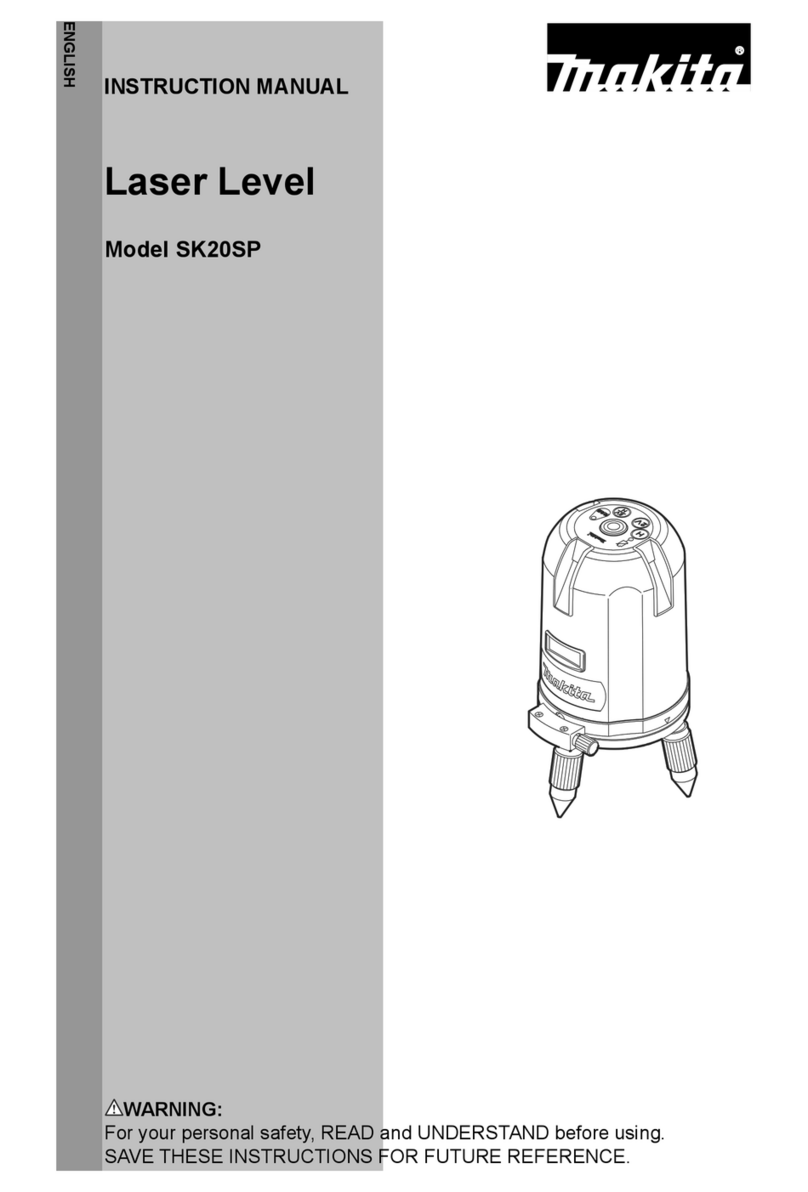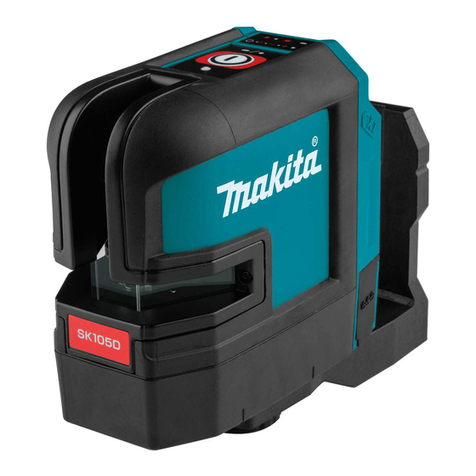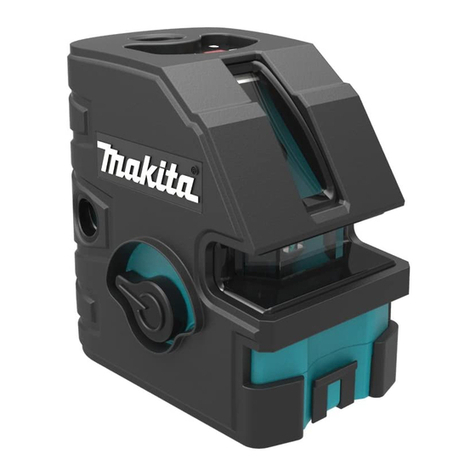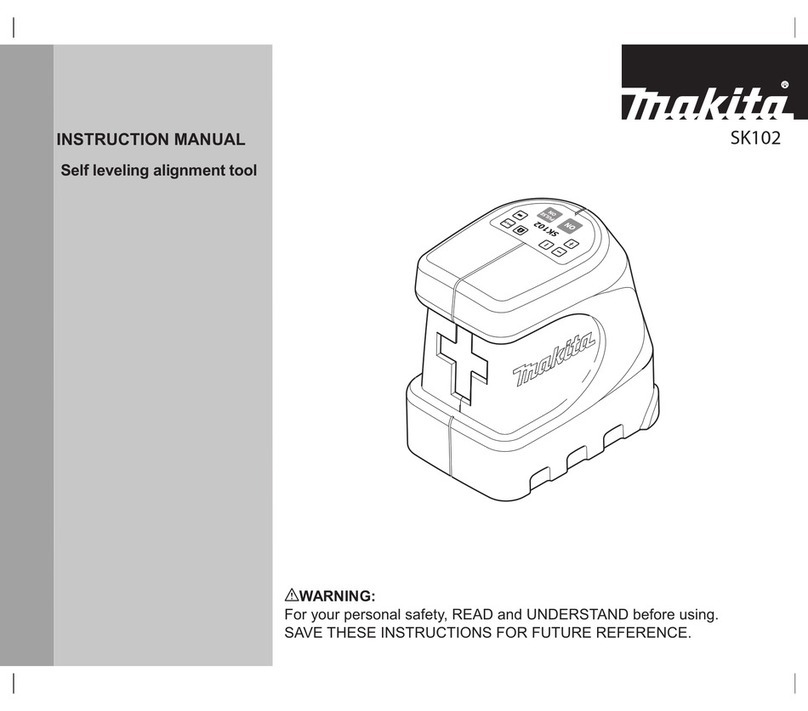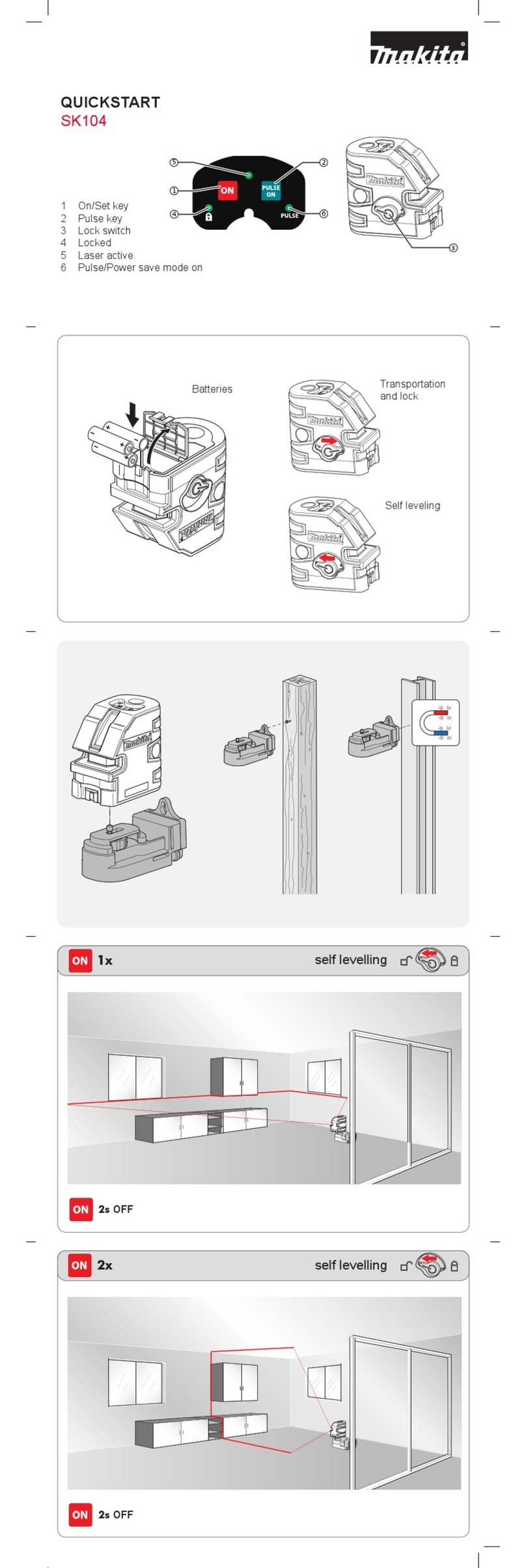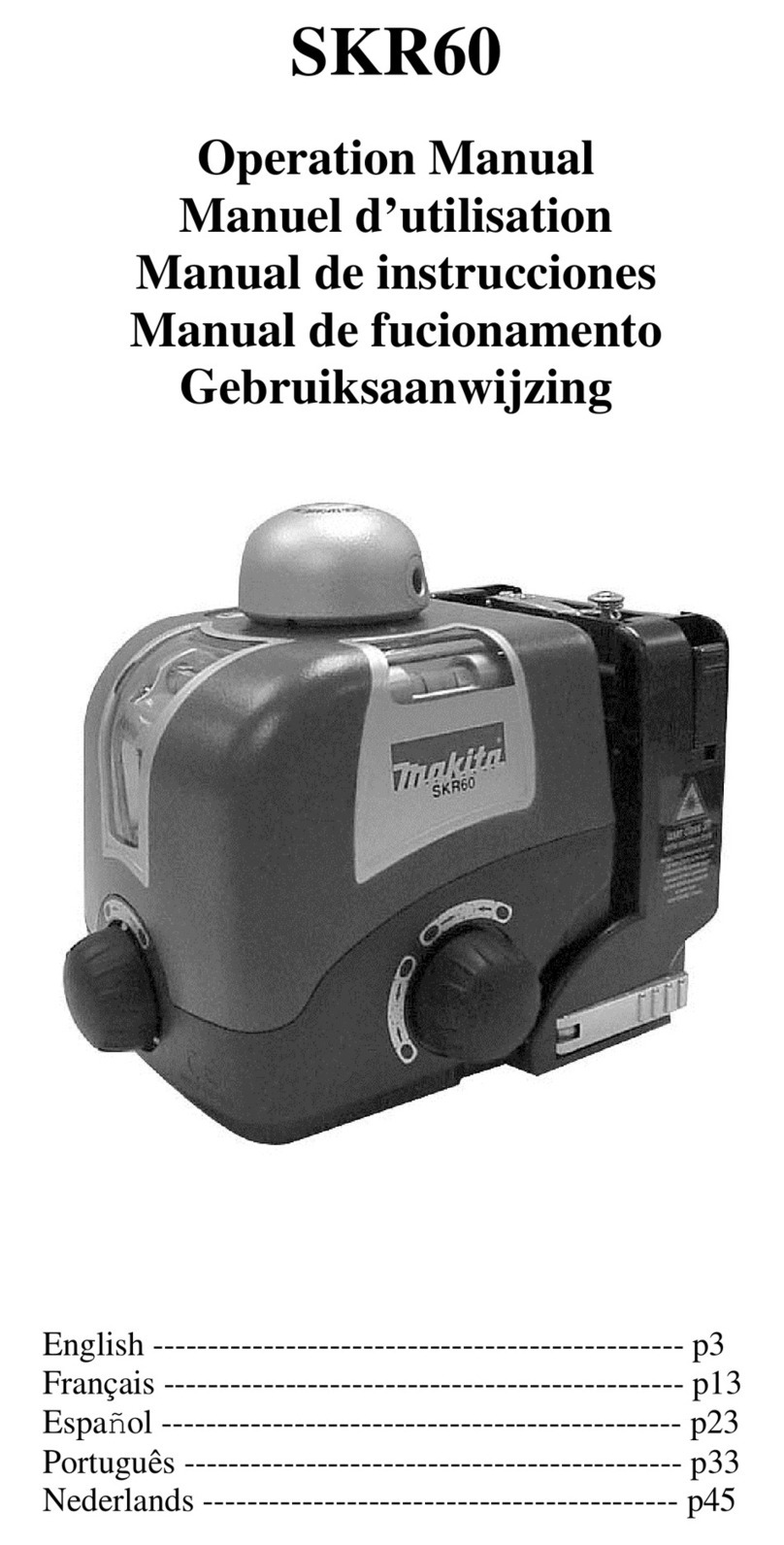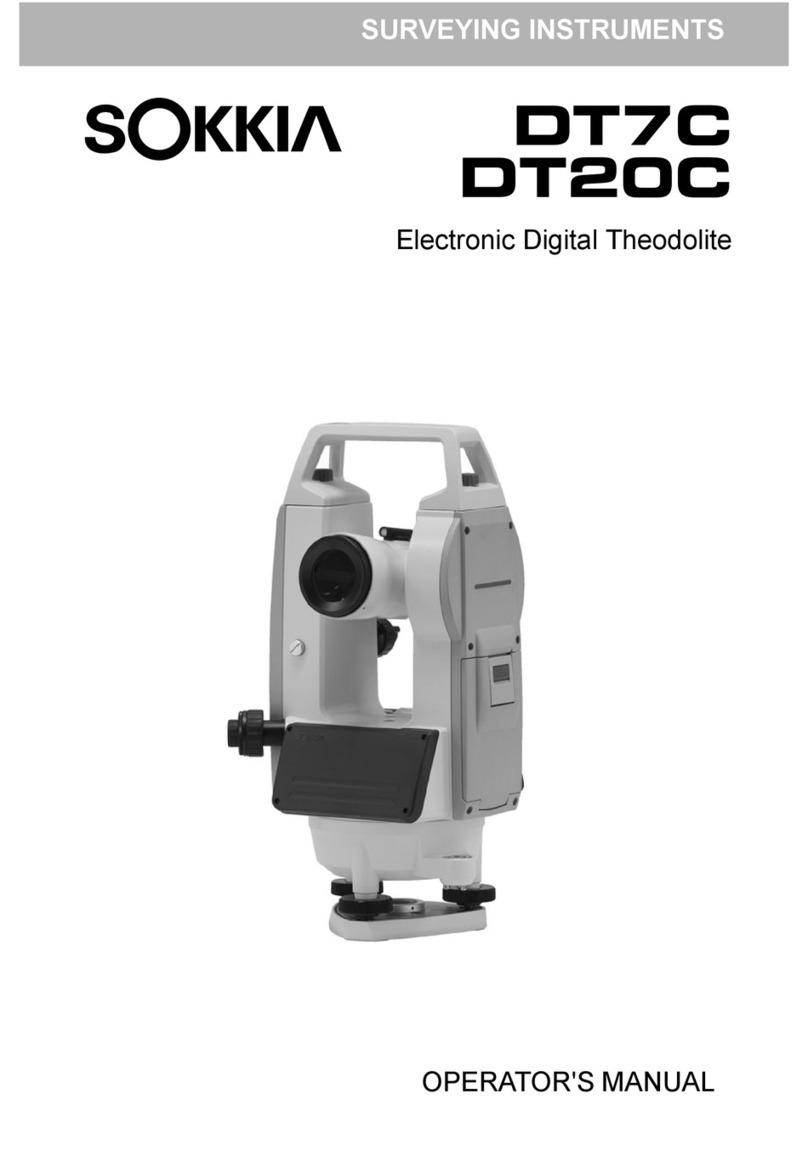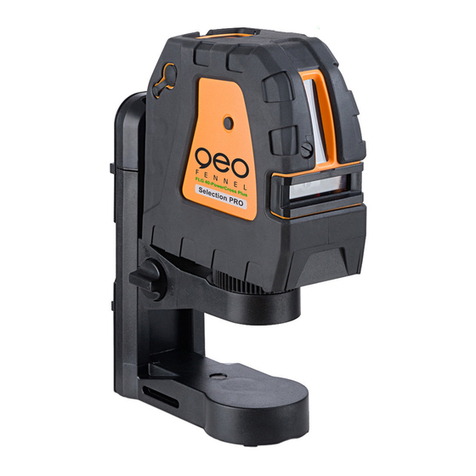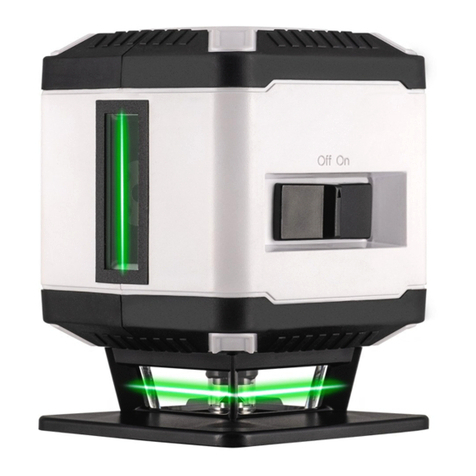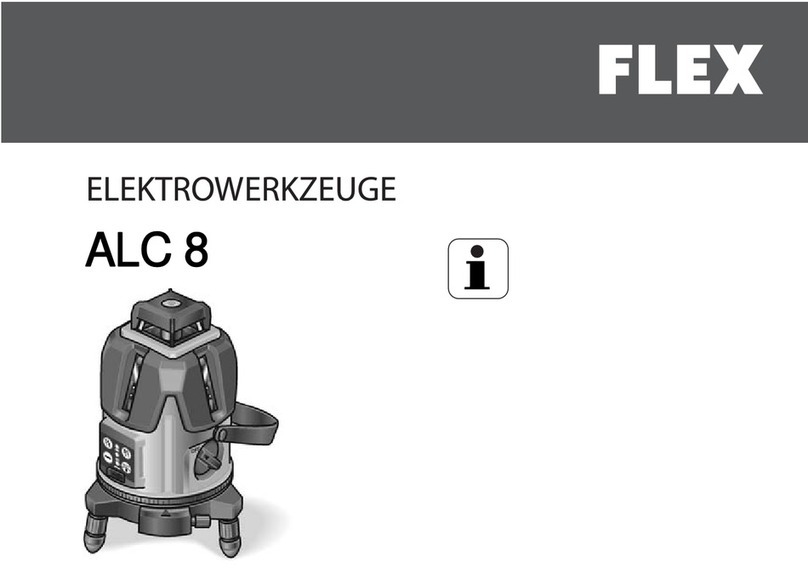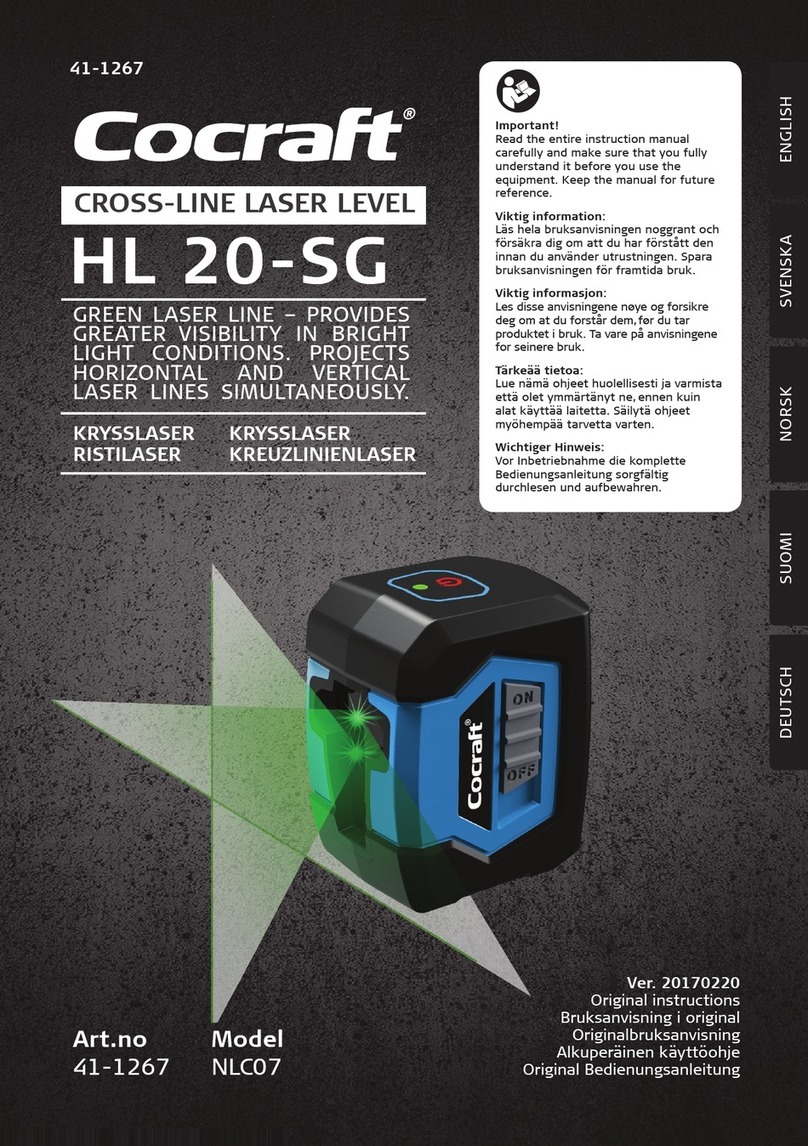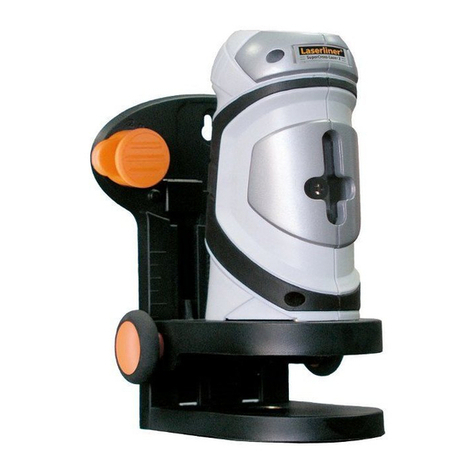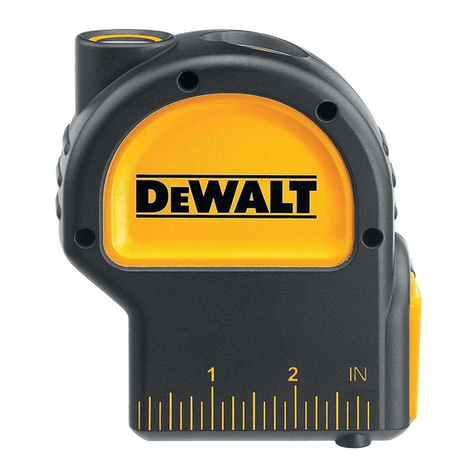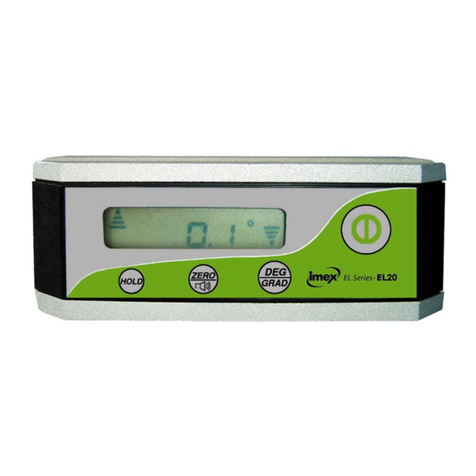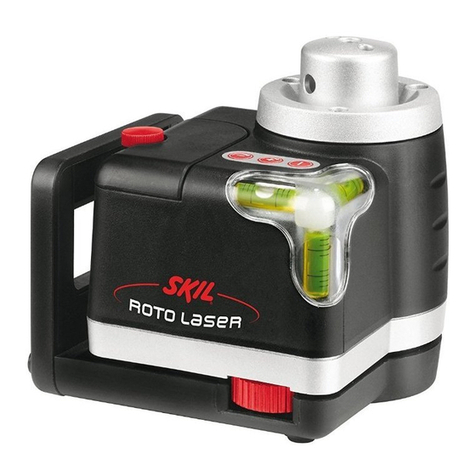SKR300 (version 1-12-03) Page 1
Table of Contents
1. Introduction
a. SKR300 Specifications Page 3
b. LDR180,TL25 Specifications Page 4
c. Overview Page 5
d. Keypad overview Page 6
2. Operation
a. Horizontal setup Page 9
b. Vertical setup Page 10
c. Using the laser chalk line Page 10
d. Using the scanning Page 11
e. Power Page 11
f. Self test mode Page 12
3. Disassembly
a. Remove lower housing, X/Y motor Page 14
b. Remove PCB Page 15
c. Two versions PCB Page 16
d. Inner module Page 17 & 18
4. Rotating head disassembly Page 19
5. Housing disassembly Page 20
6. Battery pack disassembly Page 21
7. LDR180 Remote disassembly Page 22
8. Calibration
a. X-axis calibration Page 23
b. Y-axis calibration Page 24
c. Z-axis calibration Page 26
9. Troubleshooting
a. Laser light and motor failures Page 28
b. Laser light problem Page 29
c. X / Y Motor failure Page 30
d. Excessive rotation noise Page 31
e. Accuracy out of specification Page 32
10. Spare Parts lists Page 33
11. Tools Page 40


